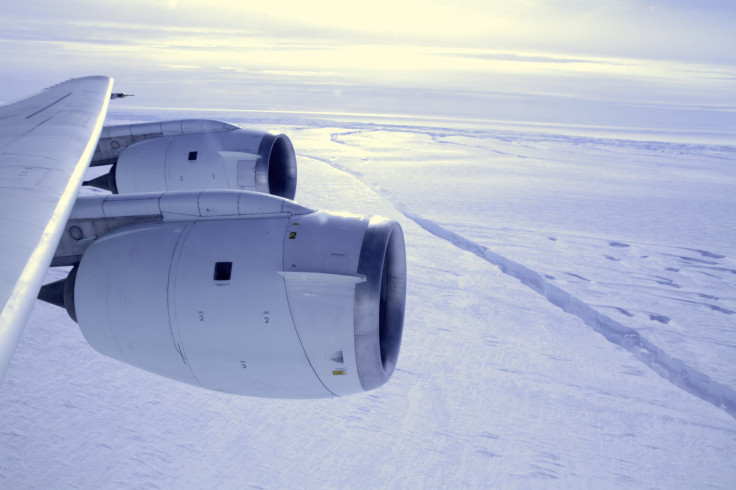Massive Iceberg, As Big As City Of Hamburg, Breaks Off Antarctic Glacier To Float In Amundsen Sea

A gigantic ice shelf, as large as the city of Hamburg in Germany, broke away from the Pine Island Glacier in the Antarctic on Monday and is now floating in the form of a huge iceberg in the Amundsen Sea, an arm of the Southern Ocean off Marie Byrd Land in western Antarctica.
It was NASA, which, in October 2011, first discovered the evidence of the Pine Island Glacier ice shelf beginning to break apart. At that time, the crack that cut across the floating ice shelf was about 24-kilometers-long and 50-meters-wide. A second crack was spotted in May 2012, producing an initial 30-square-kilometer-size iceberg.
“As a result of these cracks, one giant iceberg broke away from the glacier tongue. It measures 720 square kilometers and is therefore almost as large as the city of Hamburg," Professor Angelika Humbert, ice researcher at the Alfred Wegener Institute in Bremerhaven, Germany, said in a statement, on Tuesday.
Humbert and other researchers, who were tracking the changes in the cracks using the German Space Agency's TerraSAR-X satellite, documented the area of the ice shelf in multiple images to solve the mystery of the ice calving and better understand the physical processes behind the glacier's movements.
Researchers said that the large crack on the Pine Island glacier, which extended initially to a length of 28 kilometers, widened gradually to measure around 540 meters at its widest point just before the iceberg’s birth.
Humbert said that climate change has very little impact on ice breaks and the formation of new icebergs. According to her, the Pine Island Glacier, which is the fastest-flowing glacier in western Antarctica, with a flow speed of around 4 kilometers per year, gets its speed from changing wind directions on the Amundsen Sea, rather than from rising air temperatures.
“The wind now brings warm sea water beneath the shelf ice. Over time, this process means that the shelf ice melts from below, primarily at the so-called grounding line, the critical transition to the land ice,” Humbert said.
A recent study revealed that warm ocean currents melted 55 percent of all Antarctic ice shelves from the bottom between 2003 and 2008. In total, Antarctic ice shelves lost 2,921 trillion pounds (1,325 trillion kilograms) of ice each year between 2003 and 2008 because of ice melting from the bottom.
If the flow of the Pine Island Glacier speeds up, it could cause serious consequences to the western Antarctic ice shelf, which, if it flows into the ocean, could lead to a global rise in sea level of around 3.3 meters, Humbert added.
© Copyright IBTimes 2024. All rights reserved.






















